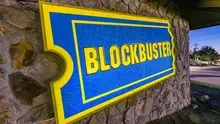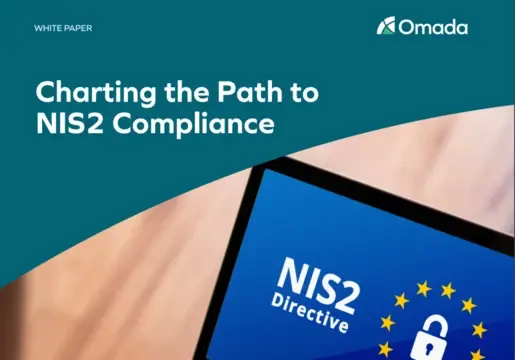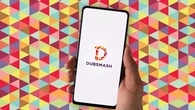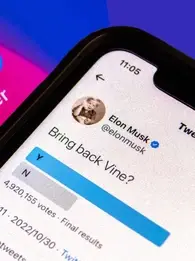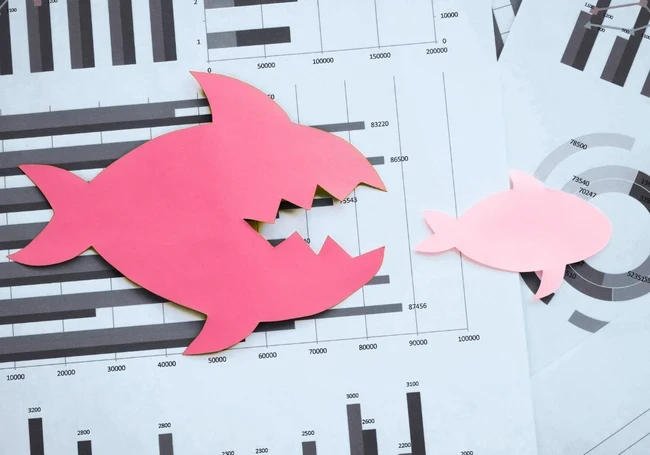
In an ever-evolving industry like technology, the right Merger and Acquisition (M&A) deal can shape the future of a business.
It can give a company the unique opportunity to grow market share without the pressure of damaging their own assets while giving them access to resources that could allow them to make huge strides in their industry.
Just look at Disney and Pixar, for example. The entertainment giants’ legendary merger was a match made in heaven, allowing Disney to produce some of its most successful films of all time, and Pixar to release bi-yearly films supported by Disney’s powerful advertising, marketing plugs, and merchandising.
But for every M&A success story, there is another that fell completely flat. M&As are inherently risky, and without a solid strategy, intuition and knowledge can quickly turn.
What is a merger and acquisition (M&A) deal?
A merger and acquisition (M&A) deal refers to a business transaction where two companies either combine their operations (merger) or one company takes control of another (acquisition). In a merger, two companies, often of similar size, agree to unite into a single new entity.
This is typically done to increase market share, achieve economies of scale, or enhance competitiveness. Mergers are usually seen as a mutual decision, with both companies benefiting from the shared resources, talent, and customer base that result from the combination.

In a merger, two companies, often of similar size, agree to unite into a single new entity. This is typically done to increase market share, achieve economies of scale, or enhance competitiveness. Mergers are usually seen as a mutual decision, with both companies benefiting from the shared resources, talent, and customer base that result from the combination.
M&A deals are strategic tools used to drive growth, reduce costs, or enter new markets. However, they can be complex, involving detailed legal, financial, and regulatory processes. The success of M&A transactions often depends on the effective integration of the companies involved.
How do M&A deals go wrong?
M&A deals can go wrong for a variety of reasons, but they usually stem from poor planning, execution, or integration challenges. One of the most common issues is cultural mismatch. When two companies merge, their corporate cultures may clash, leading to conflicts between employees, management, or even customers.
If the companies have significantly different values, management styles, or working environments, the merged entity may struggle to create a cohesive and productive culture, leading to reduced morale and high employee turnover.
Another critical failure point is overestimating synergies. Companies often pursue M&A deals with the expectation of achieving cost savings or increased revenue by combining operations.
However, these synergies can be difficult to realize, and if the projected financial benefits are overly optimistic or unattainable, the deal may fail to deliver the expected returns. Integration problems, such as mismatches in technology, processes, or supply chains, can further exacerbate this issue, resulting in inefficiencies and increased costs.
Mergers and acquisitions (M&As) that failed
Whether it be because the newly acquired company goes bankrupt, key executives leave or are fired en-masse, or the newly merged company ends up splitting in a sort of corporate divorce – when an M&A goes wrong, it can end in disaster for both companies involved.
We’ve compiled our picks for the top 10 worst mergers and acquisitions in history, each of which ended in disaster for the companies involved.
Microsoft and Nokia (2013)
We kick off our list with Microsoft’s failed acquisition of Nokia for $7.2 billion in September of 2013. The acquisition was seen as a major move by Microsoft to expand its presence in the mobile phone market, where it had struggled to compete with Apple's iPhone and Samsung's Galaxy devices. The acquisition of Nokia's Devices and Services division gave Microsoft access to Nokia's smartphone technology and patents, as well as its manufacturing capabilities. It was expected that the acquisition would allow Microsoft to more effectively compete in the mobile phone market and establish itself as a major player in the industry.
However, the merger ultimately failed to deliver the expected results. While Microsoft was able to gain access to Nokia's technology and manufacturing capabilities, it struggled to effectively integrate these assets into its own operations. Microsoft continued to struggle in the mobile phone market, with its Windows Phone operating system failing to gain significant market share. The acquisition was also plagued by cultural differences between Microsoft and Nokia. The two companies had different approaches to product development, marketing, and innovation, which made it difficult to align their strategies and objectives. In 2016, Microsoft announced that it was selling Nokia's Devices and Services division to a subsidiary of Foxconn for $350 million. The sale marked the end of Microsoft's foray into the mobile phone market and highlighted the challenges and risks associated with mergers and acquisitions, particularly in the fast-moving and competitive technology industry.
Daimler and Chrysler (1998)
The Daimler-Chrysler merger in 1998 was one of the largest and most ambitious cross-border M&A deals in history, with the goal of creating a global automotive giant that could compete with industry leaders like General Motors and Toyota. But cultural clashes, strategic differences, and financial struggles lead to the eventual breakup of the newly merged company.
The merger was announced at a time when both companies were facing big challenges. Daimler was struggling to expand its presence in the North American market, while Chrysler was facing financial difficulties and needed a strategic partner to help it compete with its larger rivals. Financial disaster soon plagued the merged company, with both Daimler and Chrysler suffering from declining sales and profits in the years following the merger. The company was also heavily burdened by debt, which limited its ability to invest in new products and technologies. By the early 2000s, the company found itself in big trouble, failing to achieve its goal of becoming a global automotive giant. Daimler eventually sold Chrysler to private equity firm Cerberus in 2007, and the company has since been restructured and renamed as Stellantis.
HP and Compaq (2002)
The HP-Compaq merger in 2002 takes the next spot on our list. One of the most significant mergers in the technology industry, the deal was intended to create a company that would rival IBM, particularly in the personal computer and server markets. But the merger was fraught with controversy before it was even approved. Many shareholders, including the heirs of HP's founders, fiercly opposed the deal, arguing that it would dilute HP's focus on its core printing and imaging business. Their opposition was so strong that the board of directors of HP had to resort to a proxy fight to win approval for the merger.
Doomed from the get-go, the partnership quickly turned sour. One of the main reasons for thiswas the clash of corporate cultures between HP and Compaq. HP was known for its engineering-driven culture, while Compaq had a sales-driven culture. The market conditions at the time of the meger also didn’t play in the company’s favour. The tech industry was in the midst of a severe downturn and the market for personal computers and servers was shrinking, with intense competition with big players like Dell and IBM. By 2005, the merger had failed. HP CEO Carly Fiorina was ousted and the company also underwent a significant restructuring, and the PC and server businesses were eventually separated.
Quaker Oats and Snapple (1994)
In 1994, Quaker Oats acquired the fruit drink company Snapple for a hefty $1.7 billion price tag. A little over two years later, they sold Snapple for only $300 million dollars essentially taking a 1.4 billion dollar loss. What happened is a tale of a mismanagement and a clash of ideas that left both companies struggling in an already turbulent market. Intended to create a dominant player in the beverage industry by combining Quaker Oats' sports drink Gatorade with Snapple's line of teas and juices, the deal was a financial failure. Quaker Oats attempted to apply its traditional marketing and distribution strategies to the Snapple brand, which was a departure from the brand's successful unconventional approach. Quaker Oats also made significant changes to the Snapple product line, which were unpopular with consumers and contributed to a decline in sales.
A clash of corporate cultures between Quaker Oats and Snapple was also partly to blame. Quaker Oats was a large, established company with a history of producing cereals and other food products, while Snapple was a small, entrepreneurial firm that had built its success on its unconventional approach to marketing and product development. The two companies had different approaches to business, and their cultures clashed heavily during their two-year partnership The disastrous merger had significant consequences for Quaker Oats. The company suffered significant financial losses, and its stock price declined by more than 40% in the years following the merger. Quaker Oats was eventually acquired by PepsiCo in 2001, and the Snapple brand was sold to Triarc Companies for a fraction of the price that Quaker Oats paid for it.
Amazon and Whole Foods
In the summer of 2017, Amazon announced that it would acquire Whole Foods Market for $13.7 billion, marking the largest acquisition in Amazon's history. The move was predicted to cause a major disruption to the grocery industry, with Amazon poised to bring its expertise in e-commerce and delivery to the world of brick-and-mortar grocery stores. However, the merger faced significant challenges from the outset. For one, the deal raised concerns about the potential for Amazon to exert too much control over the grocery industry. The Federal Trade Commission (FTC) conducted an investigation into the merger, which lasted several months. The investigation focused on the potential impact of the merger on competition in the grocery industry, particularly with regard to pricing and consumer choice.
While the investigation ultimately resulted in the FTC approving the merger in August 2017, it wasn’t just regulators that were concerned about the deal. Whole Foods had built its brand around the principles of organic and locally sourced food, and many of its customers feared that Amazon would prioritise profits over these values. With customers leaving Whole Foods stores en masse, Amazon was forced to end the merger, paying a substantial termination fee to Whole Foods. Whole Foods, meanwhile, faced a decline in sales and customer loyalty following the failed merger.
eBay and Skype (2005)
In September 2005, eBay announced its intention to acquire Skype, a popular internet telephony company, for $2.6 billion in cash and stock. The move was seen as a major shift for eBay, which was looking to expand beyond its core business of online auctions and move into new areas of e-commerce. At the time, eBay believed that Skype's technology and user base would allow it to offer new and innovative services to its customers, such as voice and video chat for buyers and sellers. But the integration of eBay’s shopping platform with Skype’s video conference technology quickly ran into problems. Analysts questioned whether eBay's core business model was compatible with Skype's focus on communication and collaboration. There were also concerns about the potential for conflicts of interest between eBay's buyers and sellers and Skype's communications platform.
The acquisition also faced significant regulatory scrutiny from both the European Union and the United States, which raised concerns about the potential for antitrust violations and the impact of the acquisition on competition in the telecommunications industry. The regulatory process was slow and challenging, which added to the overall complexity and cost of the acquisition. Ultimately, the acquisition failed to deliver the expected results, and eBay was forced to write off $1.4 billion of the purchase price just two years later. The failure of the acquisition serves as an example of the challenges and risks associated with M&A deals in fast-moving and dynamic industries such as telecommunications and technology. It also highlighted the importance of cultural fit and strategic alignment in successful acquisitions.
Pfizer and Warner-Lambert (1999)
The Pfizer-Warner-Lambert merger was announced in November 1999, with Pfizer set to acquire Warner-Lambert for a deal valued at $90 billion. The merger was set to create one of the largest pharmaceutical companies in the world, giving Pfizer access to Warner-Lambert's blockbuster cholesterol-lowering drug Lipitor, which was generating more than $7 billion in annual sales. However, Merck & Co, which had a joint venture with Warner-Lambert to sell Lipitor, had other ideas. As a Warner’lambert partner, it exercised this right to block the Pfizer-Warner-Lambert merger, leading to a protracted legal battle that brought the merging of a halt and more complications to the merger process.
Merck & Co cannot be entirely blamed for the merger’s failure, however. The merger was expected to lead to significant layoffs in both companies, and there was a lack of clarity about the future of the company and its direction. These factors contributed to a lack of enthusiasm from employees and investors, and the stock prices of both companies declined in the wake of the failed merger. In the end, Pfizer lost the opportunity to acquire Warner-Lambert and its lucrative Lipitor franchise, and was forced to pay a significant legal settlement to Merck & Co. Warner-Lambert was eventually acquired by Pfizer in 2000 for a much lower price than the original deal.
Alcatel and Lucent (2006)
In April 2006, Alcatel SA made the decision to acquire Lucent Technologies for $13 billion due to increasing competition from Chinese networking vendors such as Huawei Technologies Co. and ZTE Corp. The merger was aimed at creating a networking powerhouse with a revenue of $25 billion based on the 2005 financial results, and a strong presence in North America and Europe. Alcatel's target was to generate cost synergies of $1.6 billion annually by reducing the combined company's workforce by 10%. However, the integration of a European and American company proved challenging, as the two cultures often clashed. Lucent executives reportedly found it difficult to adapt to Alcatel's corporate culture, and language barriers further complicated matters. Notably, Alcatel-Lucent is a French company, but they appointed a CEO who didn't speak French. This created significant issues and misunderstandings. By the end of 2008, the two top executives who spearheaded the merger had resigned and left the company.
Despite creating the world's largest telecommunications network gear manufacturer, the synergies that Lucent and Alcatel promised failed to materialize. The cultural and linguistic differences proved to be major hurdles, which hindered the companies' ability to align their strategies and objectives. Additionally, the projected cost savings weren't realized, and the companies' financial performances deteriorated. the failure of the Alcatel-Lucent merger highlights the significant challenges associated with merging companies with different cultures and languages. It also demonstrates that, in addition to strategic fit and financial considerations, cultural alignment is a critical factor to consider when evaluating a merger or acquisition. Eventually, in November 2016, Nokia acquired Alcatel-Lucent for $15.6 billion. This merger marked the end of Alcatel-Lucent as a standalone company, and the start of a new chapter in Nokia's growth strategy.
Citicorp and Travelers Group (1998)
Citicorp and Travelers Group announced plans to merge on April 7, 1998, for $83 billion to creating the world's largest financial services firm in the world. The new corporation, Citigroup, aimed to offer a broad range of banking, insurance, and investment services to over 100 million customers across 100 countries, with a workforce of 160,000 employees.The merger provided Travelers with the ability to sell mutual funds and insurance to Citicorp's retail clients, while Citicorp gained access to Travelers' extensive investor and insurance-buying customer base. The deal was expected to set a precedent for other financial firms to merge and test the viability of a "financial supermarket" concept.
However, the merger encountered cultural integration issues. Citicorp faced challenges with inflated costs, outdated technology, and employee retention after the merger. While Citicorp had a cumulative return of 35.4% over the 279-day merger period, Travelers Group had a cumulative return of 41.49% from 10 days to 268+ days leading up to the merger. The predicted benefits of the merger failed to materialize, and Citigroup was forced to break off Travelers Property and Casualty into a separate subsidiary firm in 2002. In 2005, Citigroup sold Travelers Life and Annuity to MetLife. While the combined company appeared to offer significant benefits on paper, integrating the different operations and systems proved to be a significant challenge, ultimately leading to the dissolution of the partnership.
America Online (AOL) and Time Warner (2000)
You can’t have a list of the biggest merger and acquisition disasters without the AOL and Time Warner merger in 2000, which is largely regarded as the worst M&A deal in history. valued at a whopping $164 billion, the massive deal was supposed to create a media and internet powerhouse. But with AOL’s plummeting subscriber base and failed strategy for transitioning to broadband, things were bound to take a turn for the worse. The AOL-Time Warner merger was announced at the height of the dot-com boom, and the deal was seen as a way for AOL to gain access to Time Warner's vast media empire, while Time Warner would benefit from AOL's dominance in the internet space.
AOL had once been a pioneer in the internet space, providing internet services to millions of customers around the world. However the company's business model was heavily reliant on dial-up internet services, which were becoming obsolete with the rise of broadband. AOL's management was heavily criticised for failing to adapt to this changing internet landscape, and the company's declining subscriber base resulted in significant financial losses for Time Warner. In the end, the AOL-Time Warner merger was a colossal failure, resulting in significant financial losses for both companies. Time Warner eventually spun off AOL as a separate entity in 2009, and the company has since struggled to regain its footing in the highly competitive internet space. Today, the AOL-Time Warner merger serves as one of history’s most cautionary tales for companies considering an M&A deal.






